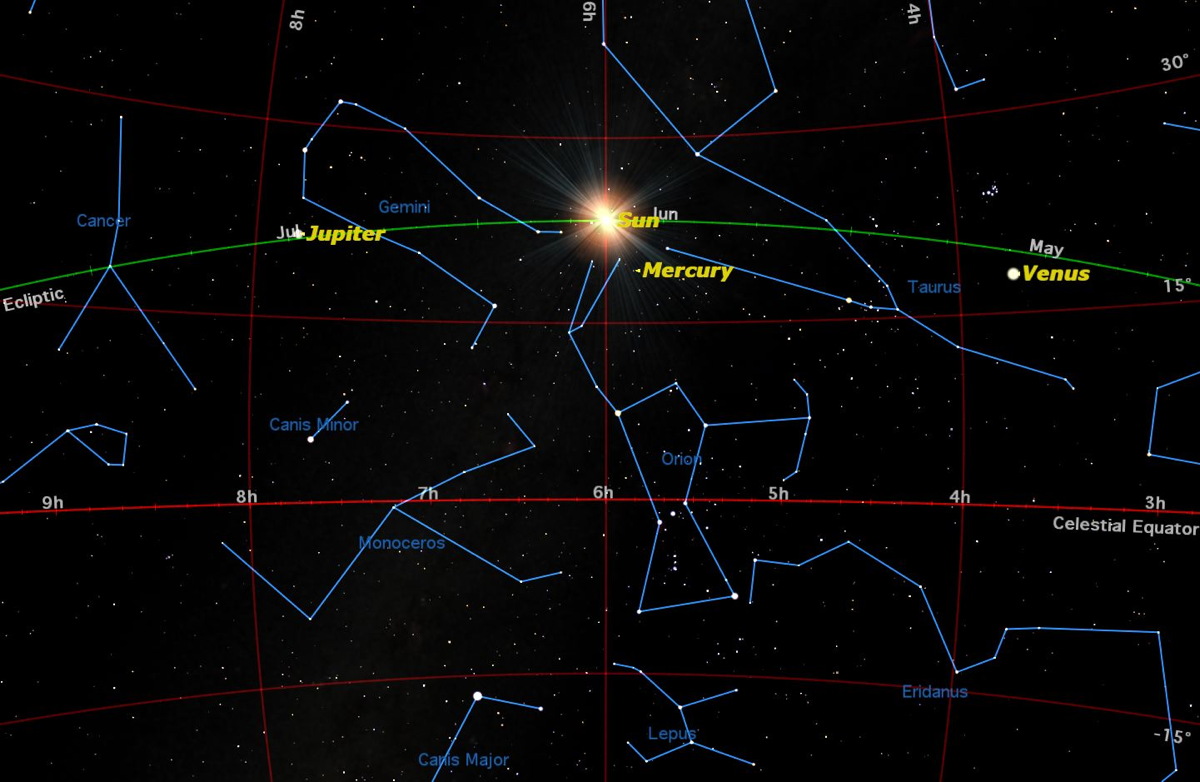Longest Day of the Year: Summer Solstice Arrives Saturday

The Earth will reach one of its four major way stations Saturday (June 21) during its annual trip around the sun.
The sun will reach its northernmost point in the sky — known as the summer solstice — Saturday. Earth's closest star will seem to pause briefly before beginning its move southward again. In the Northern Hemisphere, this marks the longest day of the year.
Because of Earth's tilt of 23.4 degrees to its orbit, the noon sun will appear to rise and fall in the sky over the course of the year. The two extremes of this apparent movement are called the solstices, derived from the Latin words for "sun stationary." [Earth's Solstices & Equinoxes (Infographic)]
In the Southern Hemisphere, Saturday will be the shortest day of the year, called the winter solstice. This situation is reversed on Dec. 21, when the sun is at its southernmost declination. People in the Northern Hemisphere call this the winter solstice, and those in the Southern Hemisphere call it the summer solstice.
If the solstice falls on June 21, why is it that the warmest days are usually a month or two later? That's because it takes the Earth a while to warm up in summer and to cool down in winter. All of Earth's seasons lag about six weeks behind the exact dates dictated by the geometry of Earth's orbit. While many people think the solstices mark the start of summer and winter, they actually represent the midpoint of each season, even if it might not feel like it.
Computer software like Starry Night allows interested stargazers to see the solstice in a way they could never witness it with their eyes by darkening the sky so that the stars and planets are visible at the same time as the sun.
In the solstice chart, the celestial equator is marked in red. The numbers mark hours of right ascension, the celestial equivalent of longitude on the Earth's surface. Zero hours is the vernal equinox, the point where the sun's path — the ecliptic — crosses the celestial equator going north. At the summer solstice, the sun is at a right ascension of 6 hours, as shown on the chart. Mintaka, the uppermost star in Orion's belt, is very close to the celestial equator.
Breaking space news, the latest updates on rocket launches, skywatching events and more!
The green line marks the ecliptic, the sun's path across the celestial sphere. The sun, moving from right to left across the chart, is just about to leave Taurus and enter Gemini. It sits right over the club held on high by Orion.
Mercury appears close to the sun in the sky, but that is just an effect of perspective. In fact, Mercury is about half way between the Earth and the sun at present, having been at its farthest east of the sun on May 25, and now moving to its farthest west on July 12. Mercury is moving from left to right in front of the sun.
Jupiter and Venus appear symmetrically placed on either side of the sun — but again, that is deceptive. Both are on the far side of the sun, but Jupiter appears to be moving from left to right, while Venus is moving from right to left. Jupiter will pass behind the sun on July 24, while Venus will pass behind, the star moving in the opposite direction, on Oct. 25.
The differences in speed and direction are partly due to the fact that Venus, in an orbit close to the sun, moves a lot faster than Jupiter, which is farther from the sun. However, the differences arise mostly because we are observing them from a rapidly moving platform: Earth. Earth's movement often makes the planets appear to slow down and reverse directions, known as retrograde motion. This is an optical illusion caused by the Earth's movement, just as the scenery seems to move backward as seen from a rapidly moving automobile.
This article was provided to Space.com bySimulation Curriculum, the leader in space science curriculum solutions and the makers of Starry Night and SkySafari. Follow Starry Night on Twitter @StarryNightEdu. Follow us @Spacedotcom, Facebook and Google+. Original article on Space.com.

Geoff Gaherty was Space.com's Night Sky columnist and in partnership with Starry Night software and a dedicated amateur astronomer who sought to share the wonders of the night sky with the world. Based in Canada, Geoff studied mathematics and physics at McGill University and earned a Ph.D. in anthropology from the University of Toronto, all while pursuing a passion for the night sky and serving as an astronomy communicator. He credited a partial solar eclipse observed in 1946 (at age 5) and his 1957 sighting of the Comet Arend-Roland as a teenager for sparking his interest in amateur astronomy. In 2008, Geoff won the Chant Medal from the Royal Astronomical Society of Canada, an award given to a Canadian amateur astronomer in recognition of their lifetime achievements. Sadly, Geoff passed away July 7, 2016 due to complications from a kidney transplant, but his legacy continues at Starry Night.


